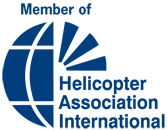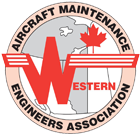Optimizing Job Scheduling in Aviation MRO: Strategies for Efficiency and Compliance
In the aviation industry, Maintenance, Repair, and Overhaul (MRO) operations are the heartbeat of safe, efficient flight. One persistent challenge faced by MRO teams is job scheduling—balancing technician availability, aircraft timelines, and regulatory compliance without compromising service levels. Poor scheduling can lead to aircraft-on-ground (AOG) events, operational delays, and unnecessary cost escalations.
This article explores practical strategies for optimizing job scheduling—and how platforms like WinAir can support organizations in streamlining these processes without adding complexity.
The Importance of Efficient Job Scheduling
Strategic job scheduling plays a central role in:
-
Minimizing Downtime: A well-structured schedule reduces turnaround times and gets aircraft back in service faster.
-
Maximizing Productivity: Aligning tasks with available workforce capacity ensures efficient technician deployment.
-
Ensuring Compliance: Scheduling maintenance at the appropriate intervals keeps you ahead of airworthiness directives.
-
Improving Transparency: A centralized scheduling system makes it easy to track progress, adjust plans, and ensure accountability.
Five Proven Strategies to Enhance Scheduling
-
Predictive Maintenance Planning
Use historical data and performance trends to forecast maintenance needs. This proactive model reduces the risk of unscheduled downtime. -
Lean Maintenance Workflows
Eliminate non-value-added steps in your scheduling process. Focus on standardization and continuous process improvement. -
Real-Time Data Integration
Live updates on technician status, part availability, and job progress enable responsive scheduling adjustments. -
Software-Driven Task Automation
Automating routine scheduling decisions—such as allocating recurring inspections—can free up planners for high-priority tasks. -
Regular Schedule Optimization Reviews
Maintenance scheduling should be treated as a living process. Regularly assess and fine-tune schedules based on operational feedback.
How WinAir Supports Smarter Job Scheduling
While there are various tools available in the market, WinAir offers an integrated scheduling environment tailored to the aviation sector. Built on decades of MRO software expertise, WinAir provides:
-
Automated Maintenance Scheduling
WinAir automatically generates task schedules based on aircraft flight hours, cycles, or calendar intervals, ensuring no job slips through the cracks. -
Resource & Workforce Planning
Maintenance tasks can be assigned based on technician availability, qualifications, and workload balance—ideal for busy maintenance departments. -
Dynamic Work Order Updates
As work progresses, WinAir updates job status in real-time, providing supervisors and planners with clear insight into daily activities. -
Regulatory Alignment
The system ensures scheduled work complies with regulatory standards (FAA, EASA, etc.), simplifying audits and inspections.
Organizations using WinAir benefit from a more structured, reliable, and cost-efficient approach to MRO job scheduling—without the overhead of customizing complex enterprise systems.
Optimizing job scheduling is about more than just managing calendars—it’s about aligning people, parts, and processes to achieve safe and efficient maintenance operations. By implementing smart scheduling strategies and utilizing aviation-focused platforms like WinAir, MRO teams can minimize downtime, control costs, and stay ahead of compliance requirements.
Contact sales@winair.ca for more information





